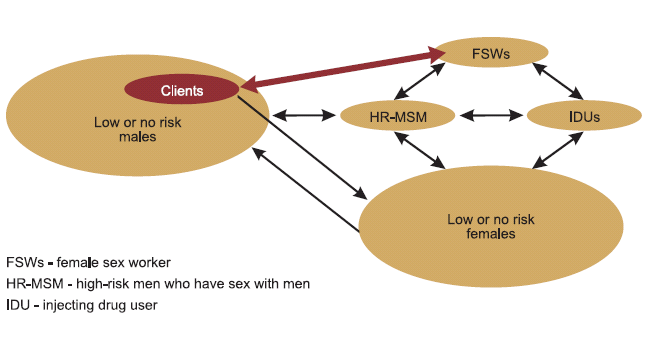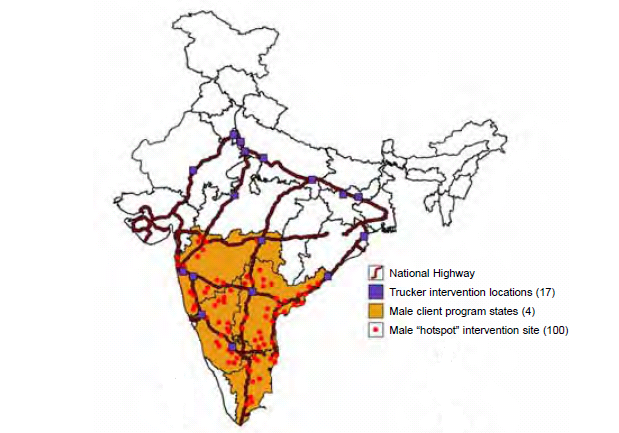Introduction
Since the discovery of AIDS a few decades ago, there have been numerous scientific breakthroughs when it comes to understanding the virus and its devastating medical consequences (Nelson & Williams, 2007, p.123). Scientists were also able to successfully develop medicines that slow down the progress of AIDS and HIV (Whiteside, 2008).
However, AIDS is still a disease with no known cure (Whiteside, 2008). Therefore, in the face of global pandemic, prevention is still the best alternative. HIV/AIDS does not respect political, cultural and economic boundaries, it is imperative to develop strategies that will mitigate the impact of this global pandemic.
A noteworthy project is spearheaded by the United Nations Development Program in the hopes of reducing the impact of HIV/AIDS. The UNDP is the United Nation’s global development network, and eleven years ago it made a bold declaration that by 2015, their efforts would lead to the reversal of the spread of HIV/AIDS (United Nations General Assembly, 2000, p.5).
This is a sub-set of the UNDP’s Millennium Development Goals (United Nations Development Program, 2011). The accomplishment of this goal by 2015 would be an impossible task without the participation of both the public and private sector.
Although government institutions play a major part, it can be argued that non-profit groups have more flexibility and have better funding mechanisms and therefore can immediately make an impact in regions with high rates of infections like India and Africa.
One of the non-profit organizations that made a commitment to initiate a significant HIV prevention program is the Bill & Melinda Gates Foundation. In 2003, the said foundation created Avahan “to fight AIDS in India and do so specifically at a grassroots level” (Zunz, 2011, p.289).
The core program “consists of efforts to organize prevention campaigns directly, take the sick out of hiding, and sustain community strength through advocacy for open treatment” (Zunz, 2011, p.289).
The Avahan is also known as the India AIDS initiative and just like the MDGs of the UNDP it is an ambitious project. However, eight years after it was established, it can be said that the program can claim tangible results.
The Avahan AIDS Initiative
The AVAHAN – India Aids Initiative was established to deal with the high prevalence of HIV in India. The fact that India is the second most populous country in the world today and has one of the highest rates of HIV infection, justifies the creation of the said non-profit group and why the Bill and Melinda Gates foundation decided to set it up in this particular country. The said initiative has three primary goals:
- Build an HIV prevention model at scale in India;
- Catalyze others to take over and replicate the model; and
- Foster and disseminate learning within India and worldwide (Avanah, 2008, p.7).
There are three important insights that can be gleaned from the primary goals listed above. First of all, Avahan is specifically designed to deal with the problems associated with India such as the fact that the six states that Avahan decided to work in “accounted for 83 percent of the HIV infections in India in 2002” (AVAHAN, 2008, p.10).
These six states are: a) Manipur; b) Tamil Nadu; c) Andhra Pradesh; d) Karnataka; e) Nagaland; and f) Maharashtra (AVAHAN, 2008, p.10). The most important reason why the group focused on six states is based on the realization that the combined population of these three states amount to 300 million people, almost the same size as the population of the US (AVAHAN, 2008, p.10).
The second most important insight is that Avahan, together with the Bill and Melinda Gates Foundation did not plan to stay in India forever or at least sustain the massive financial pledge that it is currently burdened with. It seems to suggest that Avahan is simply a catalyst.
It has to be modified to be scalable and replicable in other countries. It is a wise plan considering that the problem is widespread and that prevention programs are needed in other nations outside of India.
The third most important insight is linked to the long-term goal of Avahan. The organization made its debut in India but in the long-run it would serve as a model for other groups all over the globe. In other words Avahan is a case study when it comes to a serious initiative to eradicate or at least reverse the rising trend of AIDS infection in the world today.
An overview of the primary goals and the achievements it has to date, one has to wonder if it is related to UNDP’s Millennium Development Goals. There is no link in the sense that Avahan is independent and does not rely on the UNDP. However, these two organizations can be considered as allies when it comes to the fight against the scourge that is HIV/AIDS.
For a non-profit organization, Avahan has an impressive funding mechanism. Consider for instance the fact that the initial funding was pegged at USD$200 million for five years (AVAHAN, 2008, p.9).
In 2006, the organization received another pledge in the amount of USD$58 million (AVAHAN, 2008, p.9). Thus, it prompted the leaders to open an India office manned by local recruits that used to work in the private and public sector.
The key stakeholders are the local government in India, the various NGOs that partnered with Avahan, the leaders and staff that comprise Avahan, those who are at risk to contract HIV, and the HIV carriers.
These stakeholders are significantly affected by the work of Avahan. An efficiently managed system would greatly benefit the stakeholders but a mismanaged group can only make matters worse.
Analysis
Based on the goal of prevention, it can be said that Avahan is a resounding success. There are at least three main reasons why it has proven to be effective in preventing the spread of HIV/AIDS in the six states mentioned earlier. Firstly, the Avahan people worked with the government and donor-supported NGOs.
If they cannot find any support from locally-based organization Avahan immediately becomes the sole HIV prevention service provider in the area (AVAHAN, 2008, p.10). This strategy enables Avahan to benefit from synergy or pooling of resources, therefore there is no need to start from scratch each and every time they need to set up a facility that would enable them to pursue their goals.
The second reason for success is due to their decision to saturate the target area. The organization did not simply decide to cover a wide area – as mentioned earlier, six states with a combined population of 300 million people – but they also made it a point to connect at the grassroots level (Avahan 2008, p.10).
For example, “Avahan supports prevention programs for approximately 279,000 high risk individuals in 605 towns, in 83 out of 130 districts in these six states” (AVAHAN, 2008, p.10). At the same time the high level of coordination enables them to determine if there is duplication of efforts.
Finally, Avahan’s success is attributed to strategic thinking. The organization did not only saturate the target area, the leaders also strived to pinpoint the high risk groups and how they can be reached. For example, they target sex solicitation venues and long distance truckers (AVAHAN, 2008, p.10).
They were able to identify the main towns where there is a high-level of prostitution activity. At the same time this non-profit group also made sure that they establish their presence along 8,000 kilometers of primary trucking route (AVAHAN, 2008, p.11).
If one considers the impact of spreading the disease through the truckers and their use of commercial sex then strategic positioning could easily affect the rate of HIV infections. Aside from giving away condoms, providing education regarding the virus and its mode of transmission, Avahan also provides testing centers.

Fig.1. HIV Transmission Dynamics in Target Population (Source: AVAHAN, 2008).
The funding mechanism did not obstruct the achievement of its goals. This assertion is based on the fact that the primary source of funds came from the Bill and Melinda Gates Foundation.
Since the foundation and Avahan had the same vision and same beliefs regarding the need to mitigate the impact of HIV/AIDS through aggressive prevention programs then there is no conflict of interest.
The funding mechanism enables Avahan to pursue its goals unencumbered. There is no need to stop working on their primary assignment because they need to raise funds.
The management and staff of Avahan are assured of a sizeable amount of money that they can use to implement their strategies. The funding mechanism was established in such a way that Avahan is able to saturate a wide area and to interact and connect with a significant number of at risk men and women.
There is evidence that Avahan considered the culture and social context of the target population. Thus, Avahan did not try to develop their prevention strategies in isolation.
They partnered with the government. They also partnered with NGOs based in India. The parent organization also made sure that when they open an office in India, they would hire the locals. They simply did not bring in people from the United States to run the program.

Fig.2. Avahan Intervention Sites for Men at-risk (Source: AVAHAN, 2008).
The project is scalable but there is not enough evidence to show that it can be sustainable. The high saturation rate can only be explained by the large amounts of funds at their disposal.
It has to be pointed out that in the event that there is no local-based NGO or government agency that they can work with, Avahan had the resources to establish a facility that becomes the sole provider of HIV related services. This capability is proof that the organization is well-funded.
It is scalable because the strategies can be copied by other non-profit groups working in India. These strategies and programs can even be copied by other groups working outside India.
However, the only problem is the funding. It has to be reiterated that funds are made available by Bill and Melinda Gates. This is not just about the foundation that supported Avahan but the kind of resources that Bill and Melinda Gates can access and the extensive network that they can utilize to raise funds.
Conclusion
The Avahan AIDS initiative in India can be improved even further if the leaders can develop prevention programs that go beyond the medical aspect of the disease. It is not enough to simply teach trucker, prostitutes, and other at-risk men and women that AIDS can be transmitted through unprotected sex.
There is also a need to develop prevention programs that would help them deal with the struggles and problems related to a promiscuous lifestyle. It is not enough to simply distribute condoms; there is also the need to educate the target population that abstinence from casual sex lowers the chances of contracting the virus.
Although the Avahan initiative is not perfect the creation of the said non-profit group by the Bill and Melinda Gates Foundation served as an eye-opener to many people that all it takes to make a difference is the inner-resolve to do something that has never been done before.
It is inspiring to learn that a billionaire who need not concern himself with the problems of the poor decided to share his wealth and talent to help those in need.
References
AVAHAN. (2008). Avahan – The India AIDS Initiative: The Business of HIV Prevention at Scale. Web.
Nelson, K. & C. Williams. (2007). Infectious Disease Epidemiology: Theory and Practice. MA: Jones and Bartlett Publishers.
United Nations Development Program. (2011). Millennium development goals. Web.
United Nations General Assembly. (2000). United Nations Millennium Declaration. Web.
Whiteside, A. (2008). HIV/AIDS: A Very Short Introduction. New York: Oxford Press.
Zunz, O. (2011). Philanthropy in America: A History. New Jersey: Princeton University Press.